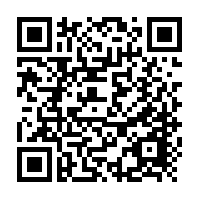Someone once said that “if you can’t measure it, it doesn’t exist.” Well, in a world obsessed with statistics it’s very easy to forget that not everything can be measured after all. And although most organisations have an entire battery of tests to measure human performance, it seems that the results they produce might not reflect reality as closely as we’re tempted to think.
Check out: Executives Ignore Valuable Employee Actions that They Can’t Measure
Listen
Glossary
- outcome – the way a thing turns out; a consequence
- shortcoming – a fault or failure to meet a certain standard, typically in a person’s character, a plan, or a system
- quantify – express or measure the quantity of
- rep – representative
- inherent – existing in something as a permanent, essential, or characteristic attribute
- arcane – understood by few; mysterious or secret
- nuance – a subtle difference in or shade of meaning, expression, or sound
Think about it
Answer the questions below.
- What two conflicting attitudes to data does the author show at the beginning of the article?
- In what way is teaching a good example of showing the good and the bad aspects of data-based performance?
- Why can sometimes high performing experts be penalised for taking on complex assignments?
- What do employees do to improve their scores in the system?
- Can we safely assume that relying on quantitative metrics exclusively gives an objective view of a person’s performance?
Practice makes perfect
Fill in the blank spaces with a/an/the if necessary. Once you’ve done it take a look at the paragraph in the text and try to explain the usage of articles.
Teaching is ___ great example of ___ strengths and shortcomings of data-based performance assessments because, in ___ sense, ___ teachers are both frontline workers (when actively teaching in ___ classroom) and executives (when they write lesson plans and develop teaching and classroom strategies). In their role as ___ line workers, teachers can be expected to respond to whatever metrics are applied to them. But simple metrics such as ___ test scores may not detect ___ difference between ___ teaching strategies that increase students’ knowledge and those that don’t.
Look for the following sentences in the text and fill in the blank spaces with the missing words and/or phrases.
- When teachers are evaluated and paid ________ students’ test scores, performance on tests typically improves.
- But research also shows that higher test scores don’t necessarily ________ greater student mastery of the material.
- Behaviors and aspects of performance that aren’t easily quantified and captured in eHRM can ________.
- Managers often don’t have the time or knowledge to ________ the metrics they apply.
- My ________ that HR is moving toward an era of better data.
- The challenge is that we still don’t know what these metrics will look like or whether they will ________ performance.
Now try to use the word/phrases you’ve found in sentences of your own.
Explore it more
(1247)
Podcast: Play in new window | Download





